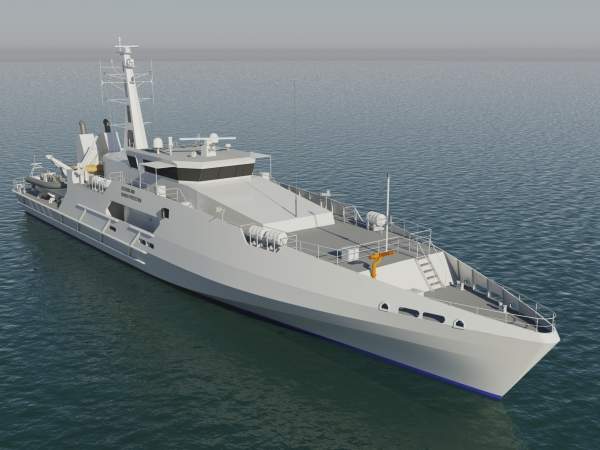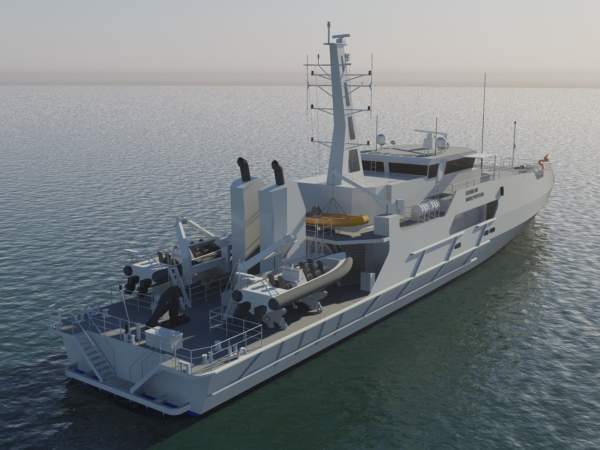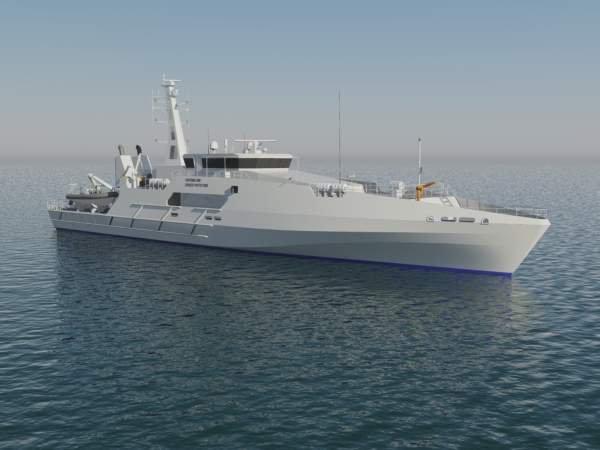Cape Class Patrol Boats (CCPBs) were built by Australian ship builder Austal for the Australian Border Force (previously known as Australian Customs and Border Protection Service) to replace the ageing fleet of Bay Class patrol boats.
The Australian Government approved the funds for the replacement of Bay Class fleet in the 2010-11 Budget. The customs and border protection issued a request for tenders in July 2010. Austal was selected as a preferred bidder in June 2011.
Austal was awarded a $350m contract in August 2011 for eight Cape Class boats. Under the contract, Austal is responsible for providing design, construction and in-service support for the vessels.
Keel-laying for the Cape Class Patrol Boats
The keel for the first CCPB was laid in June 2012 at Henderson shipyard in Western Australia. The vessel was launched in January 2013 and named as Cape St George in March 2013. Keel-laying of the second vessel was hosted in January 2013. The vessel was launched in January 2014, officially named as Cape Byron in April 2014 and delivered in May 2014.
The keel for the third CCPB, Cape Nelson, was laid in August 2013. The boat was launched in May 2014.
The keel for the fourth CCPB, Cape Sorell, was laid in November 2013, and its launch was held in August 2014. The boat was delivered in December 2014.
The keel-laying for the fifth vessel, Cape Jervis, was held in January 2014. The boat was launched in October 2014 and delivered in March 2015. The keel for the sixth vessel, Cape Leveque, was laid in March 2014. The boat was launched in January 2015 and delivered in May 2015.
The keel for the seventh vessel, Cape Wessel, was laid in July 2014, and the boat was delivered in July 2015.
The keel for the eighth vessel, Cape York, was laid in October 2014, and the patrol boat was delivered in August 2015.
Austal received a $63m contract from the National Australia Bank in December 2015 for two more CCPBs. The first vessel was delivered to the Royal Australian Navy (RAN) in April 2017, and the second vessel was handed over in May 2017.
The CCPBs are named after capes in Australia, namely Cape St George, Cape Byron, Cape Nelson, Cape Sorell, Cape Jervis, Cape Leveque, Cape Wessel, Cape York, Cape Fourcroy and Cape Inscription.
The Government of the Republic of Trinidad and Tobago (GORTT) expressed its interest in buying two CCPBs in July 2018.
The GORTT signed an A$126m ($85m) contract for the construction of two CCPBs in August 2019. Deliveries are scheduled to be completed in the second half of 2020.
Cape Class missions
The CCPBs are deployed across the Australian exclusive economic zone (EEZ) to conduct security and surveillance operations.
The fleet prevents unauthorised maritime access, piracy, maritime terrorism, marine pollution, illegal foreign fishing, unlawful import or export, and illegal activity in protected areas.
The fleet is operated by the Border Protection Command to support its various partner agencies, such as the Australian Fisheries Management Authority, Australian Federal Police, Australian Maritime Safety Authority, Australian Quarantine and Inspection Service, Department of Immigration and Citizenship, Great Barrier Reef Marine Park Authority, and Department of Sustainability, Environment, Water, Population and Communities.
CCPBs design and features
The CCPB incorporate a monohull design. The vessels are equipped with a high degree of surveillance technology.
Each boat allows the simultaneous launch of two high-capacity response tenders (7.3m Gemini sea boats) to carry out rescues.
The patrol boats are fitted with a motion control system for improved passenger comfort. The system consists of two roll fins and two trim flaps. The vessels can operate in more rigid sea conditions and travel longer distances than the current customs’ fleet.
The Cape Class is provided with gun mounts to install deck-mounted machine guns.
It has an overall length of 57.8m, a beam of 10.3m and a draft of 3m. Each ship can carry a crew of 18. Accommodation facilities are provided for government officials and customs, as well as border protection officers.
Cape Class boats are classified under Det Norske Veritas (DNV).
Navigation and communication of Austal’s patrol boats
The boats have two electronic chart display and information systems (ECDIS), two gyro compasses, two differential global positioning systems (DGPS), a secure marine automatic identification system (AIS-S), electro-optical sensor system (EOSS), radars, and a voyage data recorder (VDR).
Secure or non-secure voice and data communication is transferred over very high-frequency (VHF), ultra-high frequency (UHF), Satcom and Sea Boat’s situational awareness systems.
Propulsion of the customs and border protection ships
CCPBs are powered by two Caterpillar 3516C main engines. Each engine delivers a power output of 2,525kW at 1,800rpm.
The propulsion system also integrates two ZF 9055A gearboxes and two fixed pitch propellers. The ship is fitted with a HRP 2001 TT 160kW bow thruster for high manoeuvrability.
The system provides a maximum speed of 25k and range of 4,000nmi at 12k.






